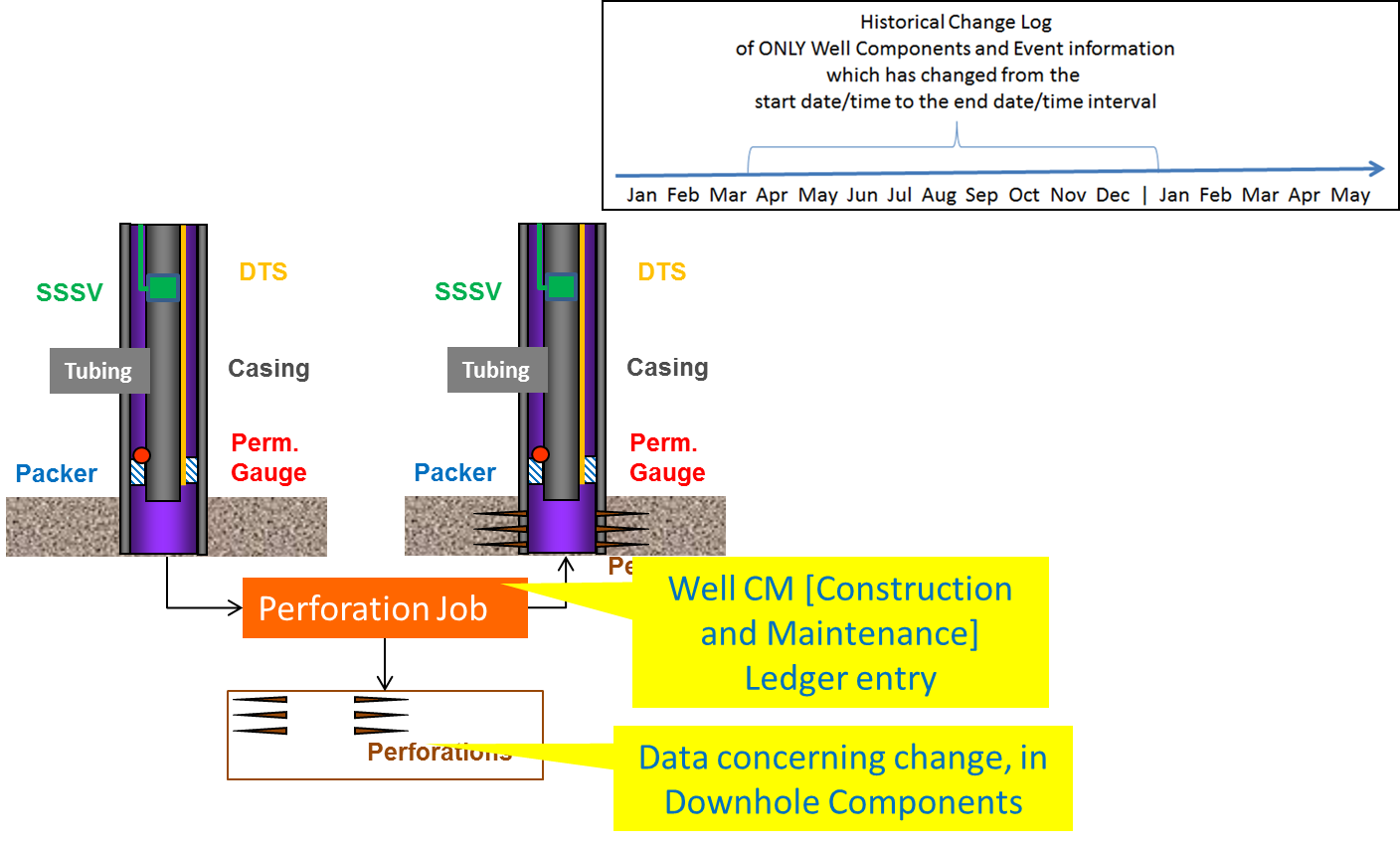8.1.2 Change Log Use Case
| Topic Version | 1 | Published | 11/11/2016 | |
| For Standard | WITSML v2.0 | |||
The change log use case is about exchanging ONLY the data that has changed over a specified time period. Components that did not change are NOT exchanged. This capability is useful to allow repeated synchronization of applications or databases.
Well and completion configurations change by performing or executing a "job", a single completion or well service (For more information, see 8.1.4 Jobs, Events, and Service Company Data , 8.1.4 Jobs, Events, and Service Company Data ). Information about the job and resulting changes are captured in an "event ledger" called the Well CM Ledger (CM stands for “construction and maintenance”), which captures necessary data about both the job that created the change and the result (e.g., equipment change) of the job. (For more information about the Well CM Ledger, see 8.2.2 Well Construction and Maintenance Ledger (Event Ledger) , 8.2.2 Well Construction and Maintenance Ledger (Event Ledger) .)
Figure 8.1.2-1 shows an example perforation job (in a well that has already been cased, tubing has been run, and is ready to produce).

The ledger in this case would have a single entry for this perforation job. The entry contains data about:
- Job as a process. In our perforation job example, job data would include which company performed the job, when it was run, equipment used, etc.
- Result of the job. The equipment or change associated with the well. In this example, it would be the addition of the perforations, but can also include installation, removal or replacement of equipment.
For this perforation example, the time at which the perforations become active is recorded in the equipment data object. Thus a snapshot for a time after the perforation job would show the perforations; whereas, a snapshot for a time before the job would not show the perforations.